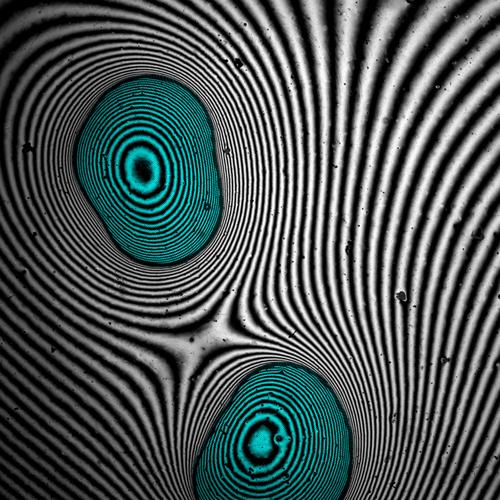|
Art of Science 2013 Online Gallery
«Prev |
Thumbnails |
Next »
|

People's Second Place
Bridging the gap
Jason Wexler (graduate student) and Howard A. Stone (faculty)
Department of Mechanical and Aerospace Engineering
When drops of liquid are trapped in a thin gap between two solids, a
strong negative pressure develops inside the drops. If the solids are
flexible, this pressure deforms the solids to close the gap. In our
experiment the solids are transparent, which allows us to image the
drops from above. Alternating dark and light lines represent lines of
constant gap height, much like the lines on a topological map. These
lines are caused by light interference, which is the phenomenon
responsible for the beautiful rainbow pattern in an oil slick. The blue
areas denote the extent of the drops. Since the drops pull the gap
closed, the areas of minimum gap height (i.e. maximum deformation) are
inside the drops, at the center of the concentric rings.
|
|